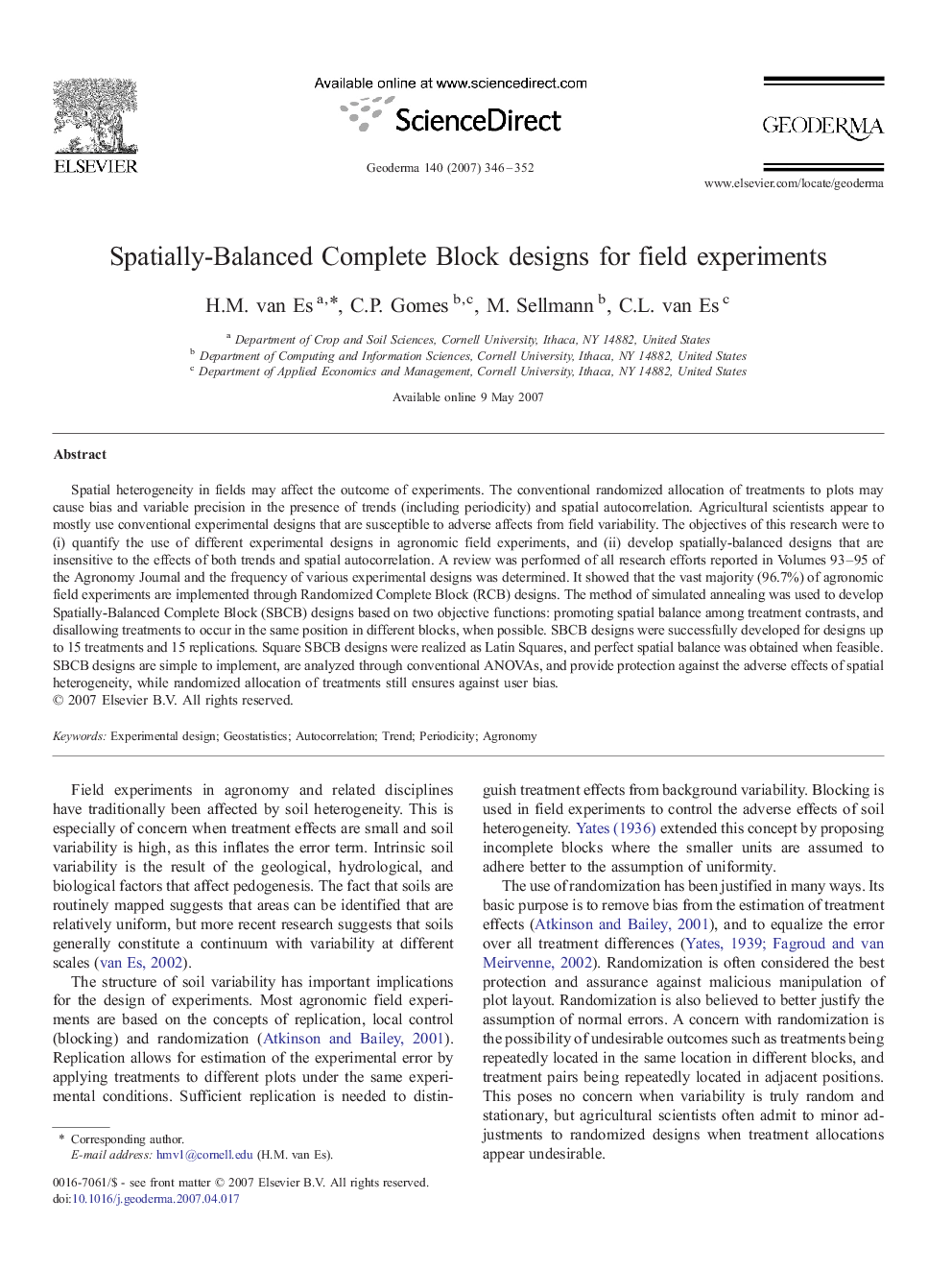| Article ID | Journal | Published Year | Pages | File Type |
|---|---|---|---|---|
| 4575103 | Geoderma | 2007 | 7 Pages |
Spatial heterogeneity in fields may affect the outcome of experiments. The conventional randomized allocation of treatments to plots may cause bias and variable precision in the presence of trends (including periodicity) and spatial autocorrelation. Agricultural scientists appear to mostly use conventional experimental designs that are susceptible to adverse affects from field variability. The objectives of this research were to (i) quantify the use of different experimental designs in agronomic field experiments, and (ii) develop spatially-balanced designs that are insensitive to the effects of both trends and spatial autocorrelation. A review was performed of all research efforts reported in Volumes 93–95 of the Agronomy Journal and the frequency of various experimental designs was determined. It showed that the vast majority (96.7%) of agronomic field experiments are implemented through Randomized Complete Block (RCB) designs. The method of simulated annealing was used to develop Spatially-Balanced Complete Block (SBCB) designs based on two objective functions: promoting spatial balance among treatment contrasts, and disallowing treatments to occur in the same position in different blocks, when possible. SBCB designs were successfully developed for designs up to 15 treatments and 15 replications. Square SBCB designs were realized as Latin Squares, and perfect spatial balance was obtained when feasible. SBCB designs are simple to implement, are analyzed through conventional ANOVAs, and provide protection against the adverse effects of spatial heterogeneity, while randomized allocation of treatments still ensures against user bias.
